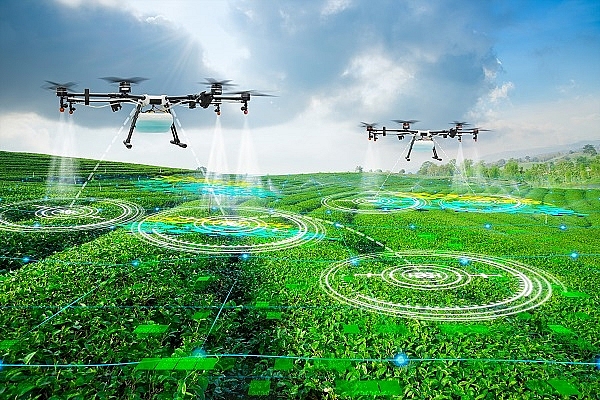Vietnamese agriculture 4.0 harbours great potential
 |
| Vietnamese agriculture 4.0 harbours great potential, source: shutterstock |
 |
What potential do you see in Vietnam’s agricultural sector compared to others in the ASEAN region?
We are very excited by the potential of high-value products in Vietnam. Vietnam has many types of fruit such as durian, dragon fruit, and niche cocoas. These crops can provide much higher returns to farmers and Vietnam is well positioned to enhance these opportunities.
What opportunities do you see for foreign investors in conducting business and investment in Vietnam’s agricultural sector?
Well, we will build on the production foundations that Vietnam has already created. In particular, we will focus on value addition of existing aquaculture, animal, and crop products. In addition, we will move towards premium products and away from basic agricultural commodities.
Industry 4.0 is changing all sectors in all economies in the world, including in Vietnam. What challenges do you see Vietnam’s agriculture facing due to this development?
As labourers increasingly move off farms, technology will be needed to farm more efficiently. Some of these people will move to cities, but there is also a lot of potential in the agri-business sector.
I expect to see many new jobs emerge in the broader agricultural supply chains, for example in the provision of contract services (such as ploughing, mechanised harvesting, and agrochemical application), input supply, and especially agricultural processing and value addition.
This should be encouraged, both to support farmers and to ensure rural areas remain strong. Additionally, we would expect to see the emergence, in Vietnam, of a cadre of better, younger and more professional farmers, able to utilise the new technologies, and produce for the expanding and more discerning food markets regionally and globally.
Grow Asia is a multi-stakeholder partnership platform that enables collaboration and catalyses action in support of national and regional agriculture development priorities within the ASEAN. What has it done and will it do to support Vietnam’s agricultural sector?
Our value in Vietnam is bringing different actors together. From my experience in Grow Asia and across my career, I see that countries which perform especially well in agriculture have a forum where the public, private, and producers’ sectors can share knowledge, tackle problems, and agree on policy solutions together.
For example, the Partnership for Sustainable Agriculture in Vietnam (PSAV) was formed in May 2010. The partnership is comprised of over 60 partners from global and local companies, provincial governments, the national research institute, international organisations, and non-governmental organisations (NGOs).
Our aim is to see NGOs, farmer organisations, government, and business in Vietnam pulling in the same direction. After all, in many cases, they each want the same outcome.
What the stars mean:
★ Poor ★ ★ Promising ★★★ Good ★★★★ Very good ★★★★★ Exceptional
 Tag:
Tag:
Related Contents
Latest News
More News
- Ho Chi Minh City backs $2 billion AI data centre with dedicated task force (January 06, 2026 | 08:43)
- PM sets January deadline for high-speed rail consultant (January 06, 2026 | 08:40)
- New decree spurs on PPP implementation (December 31, 2025 | 19:01)
- Global alliance develops $1 billion AI data centre network in Vietnam (December 30, 2025 | 10:08)
- Standing out in the Chinese outbound investment wave (December 29, 2025 | 10:29)
- Bright spots obvious in foreign investment mission (December 29, 2025 | 09:00)
- Ho Chi Minh City hits $8.37 billion in FDI (December 29, 2025 | 08:28)
- Vietnam and UK cooperation backs finance talent for IFCs (December 27, 2025 | 16:31)
- Global partnerships key to Vietnam’s IFC development (December 26, 2025 | 16:18)
- Vingroup pulls out of bid to invest in North-South high-speed railway (December 26, 2025 | 11:42)























 Mobile Version
Mobile Version